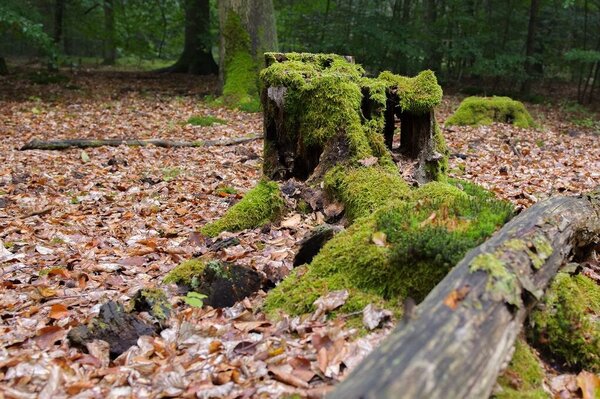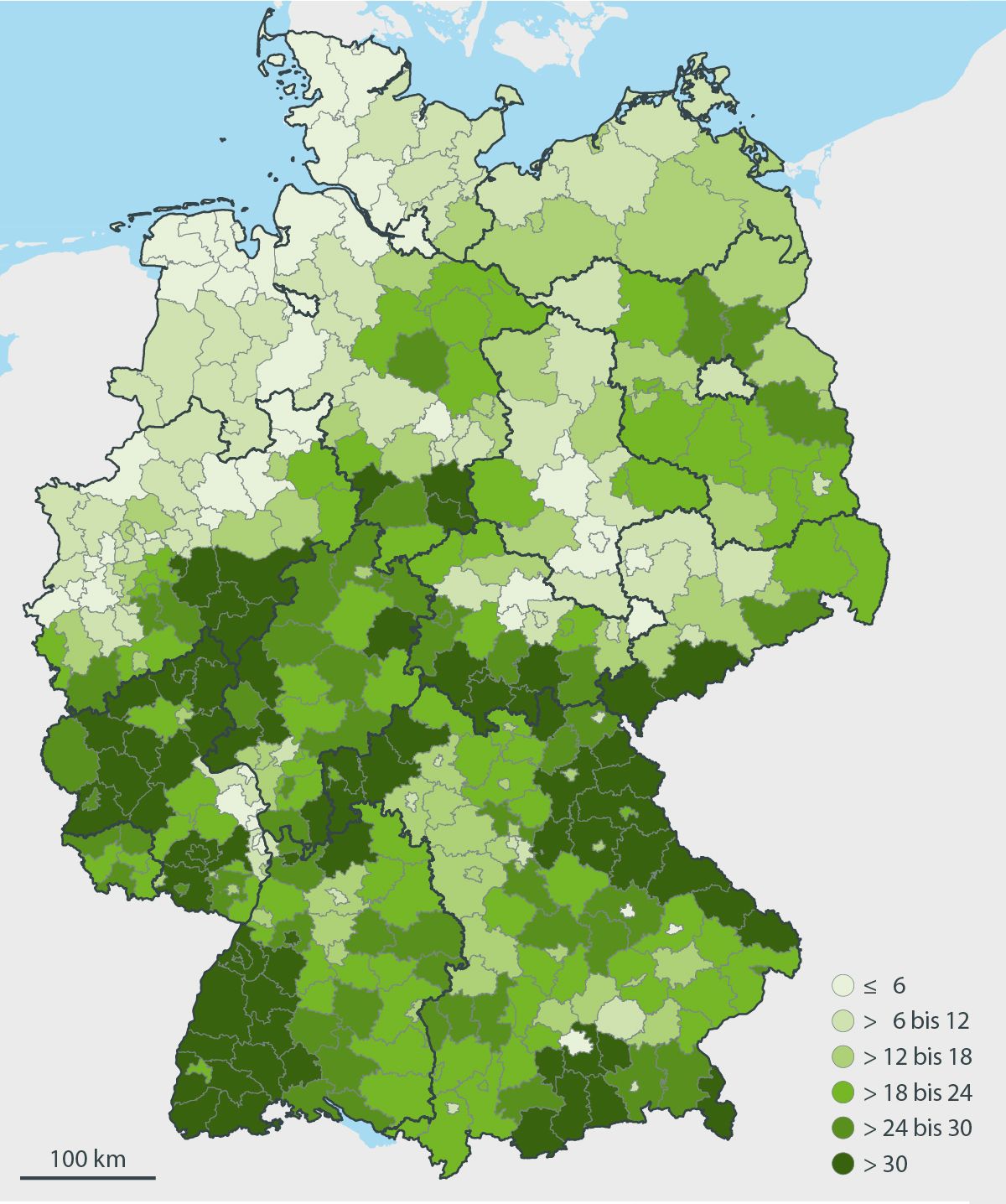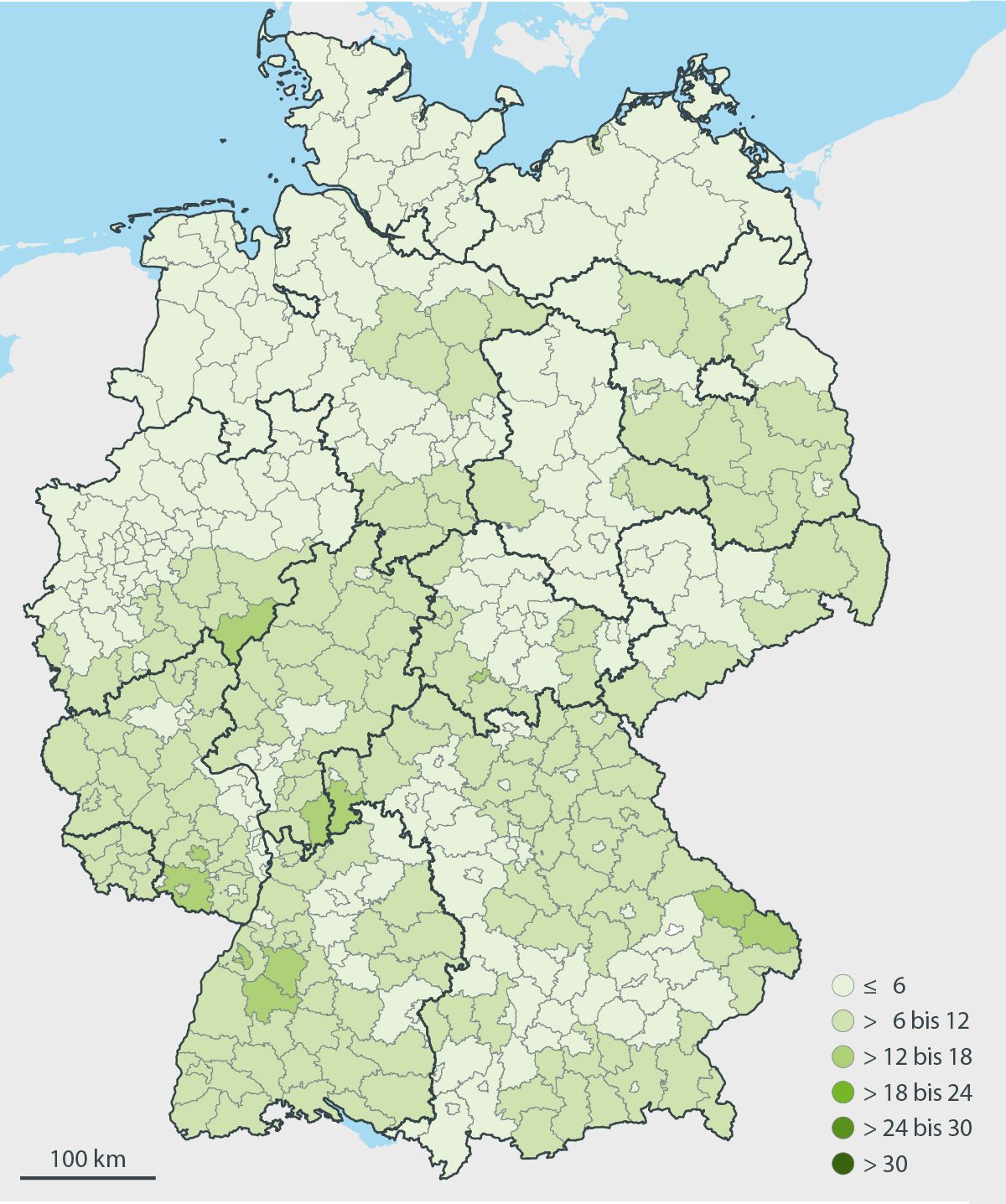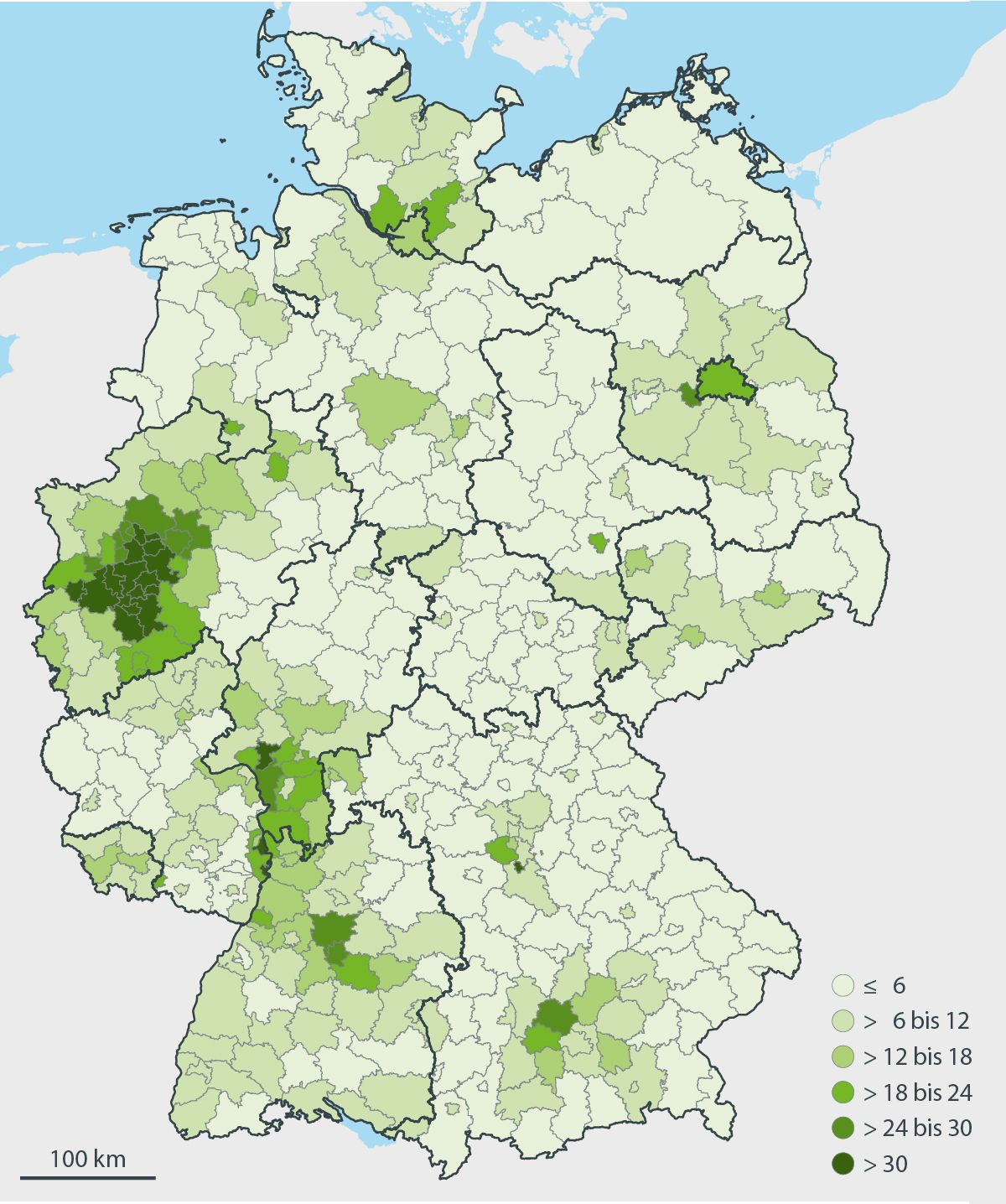Expertise
What the forests are worth to us
Ulrike Hochgesand and Peter Elsasser (Wissenschaft erleben 2020/2)
Forests are suppliers of raw materials, habitats for animals and plants, climate protectors and recreation sites. As diverse as their ecosystem services are, so are the demands of society on Germany's forests. The economic valuation of forest services can help to balance interests – especially if it takes regional differences into account.

The Thünen Institute has determined the economic values of key ecosystem services provided by forests in Germany and developed a model that can be used to depict the regional distribution of these values. In detail these are:
- Services for raw wood production,
- services for global climate protection,
- services for the recreation of the people in everyday life,
- services for nature conservation and landscape.
Raw wood production
The valuation of raw wood production aims to depict the benefits of forests as wood suppliers from the perspective of society as a whole. Therefore, timber production is assessed on the basis of its revenue potential. This is calculated from the sustainably usable increment. In 2016 it amounted to approx. 7.1 billion euros gross for the whole of Germany, i.e. without deducting harvesting costs.
The regional distribution not only takes into account the proportion of forest in the respective districts. The share of the various tree species, their growth and their respective timber prices are also taken into account. Figure 1 shows that the Bavarian Forest in the southeast, the Black Forest in the southwest, the Spessart and Sauerland in the middle and the Erzgebirge further east stand out with particularly high revenue potentials, as these areas are densely forested and home to a large proportion of high-yield tree species such as spruce and oak. In the pine-dominated north-east, on the other hand, the revenue potential is lower, although the area is densely forested. This is because the price of pine wood is significantly lower than that of spruce and oak.
Climate protection services
The assessment of the global climate protection service is based on the annual carbon sequestration. This service is also quantified via the sustainably usable increment, from which the increment of above-ground tree biomass is extrapolated using various models and the storage in wood products as well as the substitution potentials are estimated. Assessed with current prices from emissions trading, the annual benefit of the climate protection performance of German forests based on net increment amounts to 2.1 billion euros. In contrast to raw wood production, the climate protection service of forests is more evenly distributed throughout Germany (Figure 2).
Recreational benefits
The scientists of the Thünen Institute determined the monetary benefit of the population for local recreation in the forest on the basis of a representative population survey. On average, this results in a hypothetical willingness to pay of just under 30 euros per person per year. The average willingness to pay in the communities is determined by the ratio of local forest visitors to non-visitors and their respective willingness to pay; forest visitor shares of the communities are estimated statistically. Extrapolated to the total population (all inhabitants), the recreational value amounts to 2.4 billion euros per year. Subsequently, it is calculated how much visitation rates decrease with increasing distance. Using this distance function, the visits from the individual municipalities are distributed over the surrounding forests.
The result shows a regional distribution pattern that is clearly different from that of the raw wood production and the climate protection service (Figure 3). The willingness to pay for forest visits is mainly influenced by population density, less by forest distribution. The Ruhr region and the surrounding areas of larger cities, where demand is particularly high due to high population density, are characterised by correspondingly high willingness to pay for forest visits.
Nature conservation services
Several indicators describing the state of nature and its changes were used to value nature conservation services. Using a choice experiment in which a representative cross-section of the population participated, the scientists were able to determine, among other things, the willingness to pay for a restoration of the original biodiversity in the regions. It varies between 0 and over 6 million euros per year in the individual districts; this adds up to about 1 billion euros per year for Germany as a whole. Similar selection experiments were also conducted to determine the willingness to pay for different proportions of deciduous, coniferous and mixed forests, as well as for the establishment of nature reserves in the forest.
Benefits for policy
With the model of the Thünen Institute, the value of the different ecosystem services of Germany's forests can not only be quantified, but also systematically compared. Furthermore, scenarios of different forest treatments and their regional impacts can be simulated. On this basis, the German government can, for example, gear legislation and public funding to the different regional demands for ecosystem services, so that the performance potential of forests can be better exploited. To support this, the project report (Thünen Report 79) also contains a concretely elaborated organisational proposal on how the different ecosystem services of the forest could be jointly rewarded by markets, private demanders and government payments.
Service zum Download
- Wissenschaft erleben 2020/2The article „Was die Wälder uns wert sind“ on page 4/5 (in German)









